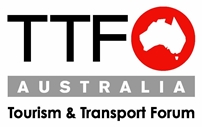
Tourism industry calls for single Australian-New Zealand border processing to mark 20th anniversary of single aviation market
Tourism & Transport Forum Australia (TTF) has marked the 20th anniversary of the Single Aviation Market between Australia and New Zealand by calling for a single border management process between both countries, and greater use of technology to identify ‘high-risk’ travellers and reduce airport queues.
Deregulation of trans-Tasman aviation in November 1996 enabled airlines to greatly expand flights between the two markets, and gave Australian and New Zealand-based carriers unlimited access to routes within both countries.
But de-restriction of airline operations and the subsequent surge in traveller numbers ‘across the ditch’ has not been supported by streamlined border processing, with passengers still required to queue for passport scanning at both ends of the short journey, and quarantine checks on arrival.
TTF CEO Margy Osmond said the time had come for Australia and New Zealand to take the next step in removing artificial and unnecessary barriers between the two countries.
“The Single Aviation Market has created enormous economic opportunities and driven significant growth in travel between Australia and New Zealand,” said Ms Osmond.
“Yet today, 20 years after this major change, a journey of around three hours is still complicated by queues at the borders on both sides of the Tasman.
“Technology has existed for some time to screen passengers at their point of departure, then electronically transmit information to border authorities at destination airports, enabling them to focus on individuals identified as security or quarantine risks, without inconveniencing every traveller.
“The US, one of the world’s most security-conscious countries, has successfully used immigration pre-clearance for many years. It’s time that Australia and New Zealand followed the lead with a streamlined and collaborative solution to benefit both countries and travellers across the Tasman.”
TTF favours a four-tier reform of trans-Tasman air travel, providing:
- A uniform standard of border processing in Australia and New Zealand;
- Pre-clearance of passengers at departure points in Australia and New Zealand, eliminating the need for most travellers to undergo quarantine inspections after trans-Tasman journeys;
- A new trans-Tasman visa for residents of specified nations other than Australia and New Zealand, enabling them to enter either country, complete a single border screening process valid for both, then travel freely between the two, and;
- Digital technology to replace cards which departing and arriving passengers must complete, resulting in electronic transfer of information and shorter airport queues.
‘Local carriers’ Qantas, Air New Zealand, Virgin Australia and Jetstar all operate trans-Tasman flights, while Dubai-based Emirates operates Airbus A380 super jumbos on four routes between Australia and New Zealand, Singapore Airlines has just entered the market and a range of other airlines operate additional services.
In 2015, more than 1 million journeys were made in each direction between the two countries, with multiple airports in Australia and New Zealand hosting trans-Tasman flights.
“We’ve made it easy for airlines to operate across the Tasman, and now, 20 years on, we need to do the same for their passengers. Australia and New Zealand both have strict and specific quarantine requirements, so we are not suggesting making the Tasman a domestic market.
“The tourism industry supports a coordinated approach to travel formalities, which enables passengers flying between Australia and New Zealand to be screened before departure, eliminating the need for most to undergo time-consuming quarantine inspections on arrival.”
In addition to streamlining journeys for passengers, reform of trans-Tasman travel regulations will enable more productive deployment of border processing staff, while significantly reducing congestion at airport terminals in Australia and New Zealand, many of which are experiencing strong growth in visitor numbers from major markets including China, Japan, Korea and the US.
